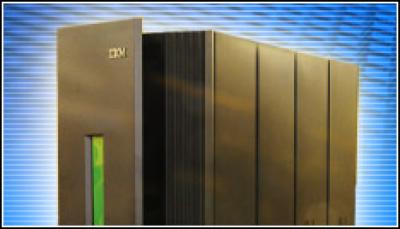IBM Luring Unix Customers Onto Linux Mainframes

IBM, which is seeing a continued resurgence in the mainframe space, is offering new migration services and financial incentives in hopes of luring away some HP and Sun Unix customers
IBM is pushing the momentum it has behind its mainframe businesses with new services designed to lure away Unix customers from rivals Hewlett-Packard and Sun Microsystems.
IBM May 29 is announcing new services and financing to make it easier for businesses to migrate their Unix workloads over to Linux on the company’s System z mainframe systems.
The Server Consolidation and Migration Services offering is designed around programs that IBM has used internally when moving its own workloads onto the mainframe as part of larger consolidation projects, said Karl Freund, vice president for System z strategy and marketing at IBM.
OEMs all have initiatives under way to lure customers away from their competitors, and Freund said that the bulk of the growth in IBM’s mainframe business is fueled by organisations that already are System z customers. IBM has had some success in migrating customers from both HP and Sun, and is seeing increasing interest from Sun customers because of the anticipated acquisition by Oracle.
“It was already a strong growth market for us because of the uncertainty [around Sun’s future],” Freund said. “Now the uncertainty is geared up because of the possible Oracle acquisition.”
IBM estimates that more than 150 businesses have moved from competitive systems to IBM’s mainframes.
With enterprises looking to consolidate their data center infrastructures, some are turning to the mainframe platform, particularly in combination with Linux, he said. According to IBM, almost 2,800 of the 5,000 unique applications available for the System z platform are Linux-based, and Linux accounted for about half of the 1,000 or so new and updated applications created for the IBM mainframe in 2008. In addition, more than 40 percent of new System z customers in 2008 installed Linux.
“We’re seeing customers really driving a lot of consolidation projects [onto the mainframe] because they get a rapid return on their investment,” Freund said, touting the mainframe’s simplicity, scalability, security and manageability when compared with more distributed computing environments.
IBM is seeing a lot of Web server, application server and database workloads getting ported to Linux on the mainframe, he said.
Clay Ryder, an analyst with Sageza Group, said IBM has done well in driving new workloads to the mainframe, pointing to the various specialty engines that make it easier to run Linux and Java workloads. However, for businesses, the issue usually is one of capacity.
“It’s like a railroad,” Ryder said. “It’s not particularly good to move a head of lettuce, but it’s really good for moving 20 cars of lettuce.”
IBM officials say there are enough businesses out there looking for such capacity and the chance to move off Unix platforms and onto Linux on mainframes, and they’re hoping to stoke that interest with the Server Consolidation and Migrations Services push.
In addition, IBM’s zReward program—patterned after a similar initiative around its Systems p servers—gives businesses more financial incentives to make the switch, Freund said.
Under the new program, enterprises that buy or upgrade to a new z10 Enterprise Class or Business Class mainframe to workloads from HP and Sun systems earn points that can be applied to IBM’s migration services. The program is similar to one announced in September 2008 that rewards IBM Power server users for migrating to the System z platform.
The mainframe business has seen steady growth since the beginning of the decade. Last year, MIPS on System z Linux mainframes jumped 77 percent, with more than 1,300 mainframe customers using that platform.
In their most recent report on the worldwide server market in the fourth quarter, IDC analysts said IBM’s System z mainframes running the z/OS operating system—though revenues dropped 18.9 percent over the same period in 2008—outperformed the overall server market for the fifth straight year.
IBM isn’t the only one seeing the positive trend in mainframes. CA has been aggressive in recent months in upgrading its mainframe management software capabilities as part of its Mainframe 2.0 initiative, and Unisys 26 May introduced new Libra and Dorado mainframes in its ClearPath platform, as well as specialty engines for Linux and Java.